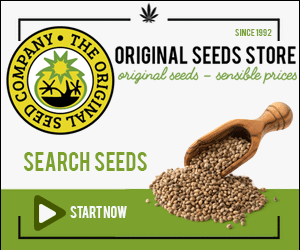In March, Ben and Jerry’s co-founders Ben Cohen and Jerry Greenfield told HuffPost Live they’d consider making a marijuana ice cream for markets with legalized marijuana. That might not be entirely surprising, considering the company’s hippy vibe—but these days cannabis cuisine is about a lot more than hippies baking pot brownies.
With laws legalizing marijuana for recreational use existing in four states, and pot legal for medical use in 23 states, the market is growing, but also has plenty of room to expand further. In Canada, medical marijuana has been legal for years and there are indications that wider legalization could arrive sooner rather than later.
This means that savvy entrepreneurs are rethinking the pairing of food and pot, long a combination relegated to munchie-induced junk food binges. Cannabis startups are bringing in big money, Forbes reported, and investors are increasingly open about their interest in the sector. The magazine named legal pot the year’s best startup opportunity. Cannabusiness Media estimated that at least $1.6 billion of marijuana was sold for legal medical use in the United States last year, and at least $600 million sold for legal recreational use—and their prediction is that legal weed will be an $8-billion business by 2018.
All that money—and potential future revenue—translates into increased interest in the sector, which also leads to education and greater knowledge about just what can be done with marijuana, including its culinary applications. “Once-popular misconceptions about cannabis are changing,” said Garyn Angel of MagicalButter, a company that manufactures a botanical extractor for infusing liquids or fats with marijuana. “There have been remarkable advancements over the last five years. New varieties of plants, new products, new uses—this world is truly being revolutionized.”
Pot, Meet Flavor
One thing some might not realize is that pot is not a botanical monolith—there are many different strains, which have different psychoactive effects as well as different tastes and smells. The sativa strain produces a high-energy effect, where the indica strain relaxes—as indicated by its “in the couch” nickname. Events can be planned around the effects of particular strains—sativa to get things going and indica to wind things down, for example. And pot can be used strategically to enhance the tastes and smells of foods and drinks.
There is more than one way to compare the trend towards cannabis cuisine to the pairing of wines or beers with food, and the analogy is useful both for understanding how chefs consider taste and smell when pairing food and marijuana and appreciating the overall experience added to a meal. “I commonly refer to cannabis doing to food what Robert Mondovi did with wine dinners in Napa the ‘80s,” Curry said.
Cookbook author Cheri Sicard also brought up the comparisons between wine and cannabis. “Beyond the practicalities of wanting more versatile foods, there is the whole gourmet flavor aspect of cannabis cooking which is quite sophisticated and has a lot in common with wine pairings,” she said, “as you are matching flavor terpenes in the marijuana with foods that share the flavor profiles. There is a lot of interesting territory for adventurous chefs to explore with cannabis cooking.”
Terpenes are found in all plants, said Melissa Parks, a cannabis culinary consultant who specializes in edibles product development and terpene pairing dinners. For example, when paired with crispy sea bass, Strawberry Haze can enhance the dish even if smelled before eating, Parks said—and if smoked after eating, it clears the palate and enhances the palate for dessert.
“It can actually enhance the flavor or compliment the flavor, or be a beautiful contrast to the dish,” Parks said.
“The goal in legal markets is to locally source specific pure strains of cannabis products with distinct characteristics for our salves, tinctures and edibles,” said Chef Payton Curry, owner of the restaurant Brat Haus in Scottsdale and product development and cuisine consultant to MariMed Advisors. “The emerging market is craving an edible line that is ‘land crafted,’ as I call it.” Curry focuses on natural, healthy ingredients like local honey or heirloom medjool date syrup for infusions or local pecans for nut butters.
Garyn Angel got the inspiration for MagicalButter from a friend who smoked cannabis to control his Crohn’s disease. Angel began researching cannabis butter as an alternative, and began his own work on the project in order to help his friend come up with more consistent results. Literally hundreds of different foods can be made using MagicalButter, Angel said—their own site includes infused oils, salad dressings, sauces, and baked goods, among other options.
Meanwhile, cannabis cookbooks are moving out from the underground. In a recent Publisher’s Weekly article, Skyhorse Publishing editor Nicole Frail said, “I think people who want to experiment with cannabis as an ingredient will appreciate a more high end cookbook with sophisticated recipes.” Skyhorse will publish The Cannabis Kitchen Cookbook: Feel-Good Food for Home Cooks by Robyn Griggs Lawrence in September. Pot recipes are not just for college parties anymore.
Medibles: Where Remedy Meets Recipe
Along with the recreational uses, many of the same products provide advantages for people using marijuana for medical indications. MagicalButter, for example, can be used by patients who’d like to consume cannabis instead of smoking it. When eaten instead of smoked, cannabis is metabolized by the liver, then converted from Delta-9-THC to 11-Hydroxy-THC, which has the benefit of being more potent. “For many patients it’s a less expensive way to medicate than, say, smoking cannabis,” Angel said of consuming pot-laced foods.
Cannabis-infused foods—or medibles—have the fastest growth rate in the cannabis marketplace, said S. Rowan Wilson, founder and CEO of Mary Jane’s World. “A good ‘access point’ will now have around 35% of its products as edibles,” Wilson said. “Colorado now sees up to 50 percent of the products in recreational stores moving as edibles.”
Therapeutic use of cannabis is also the way to changing attitudes for some. Chef Curry experienced a shift in his perspective towards marijuana when he saw how it helped a family member experience relief from some symptoms related to Lyme disease and autism. “I then began to look at it as providing children with cannabis as a nutrient as well as a medicine,” Curry said. “When you look at certain conditions as nutrient deficiencies and cannabis as a vegetable satisfying those deficiencies, it makes better sense.”
Sicard’s exploration of marijuana began when she became a medical marijuana patient herself. A professional food writer and recipe developer before that point, Sicard—whose book Mary Jane: The Complete Marijuana Handbook for Women came out in April—wrote her first book, The Cannabis Gourmet Cookbook, after encountering misinformation and conflicting opinions in her own research.












Comments are closed.